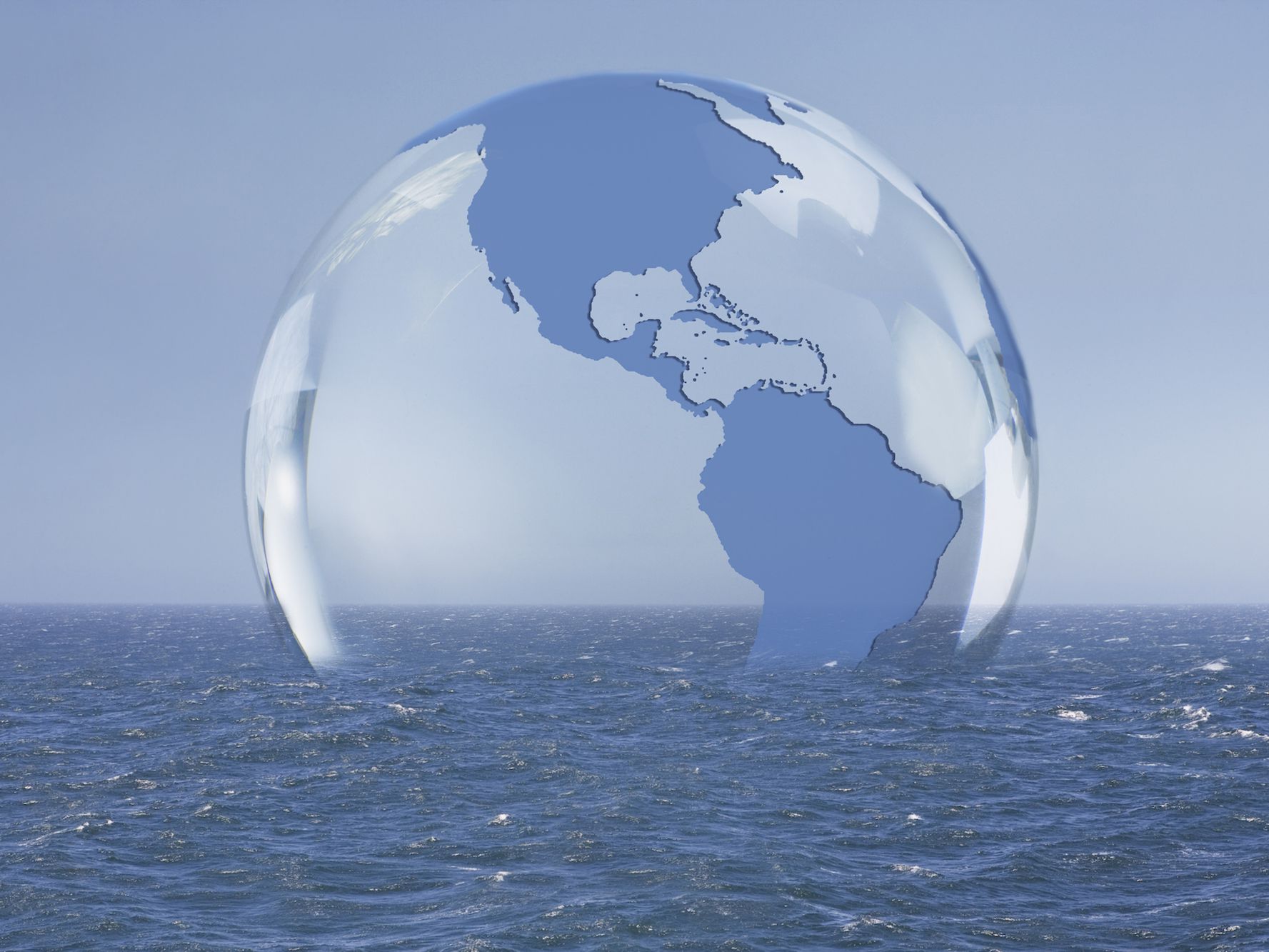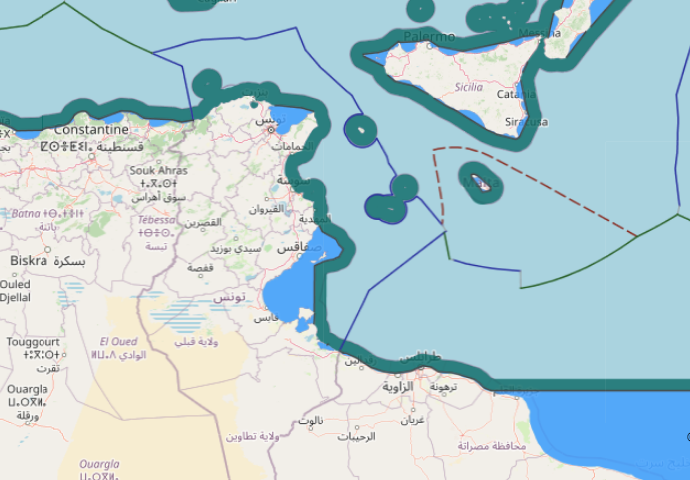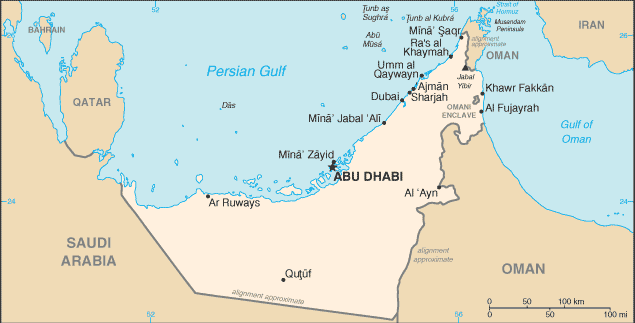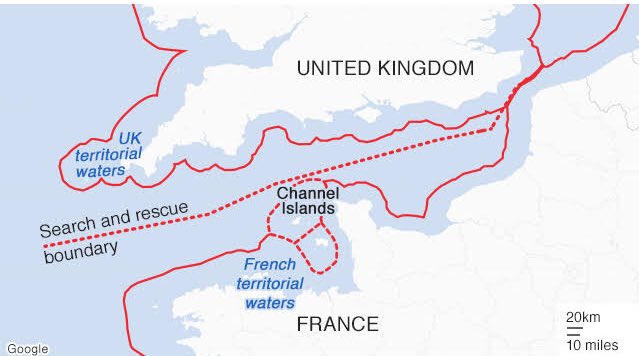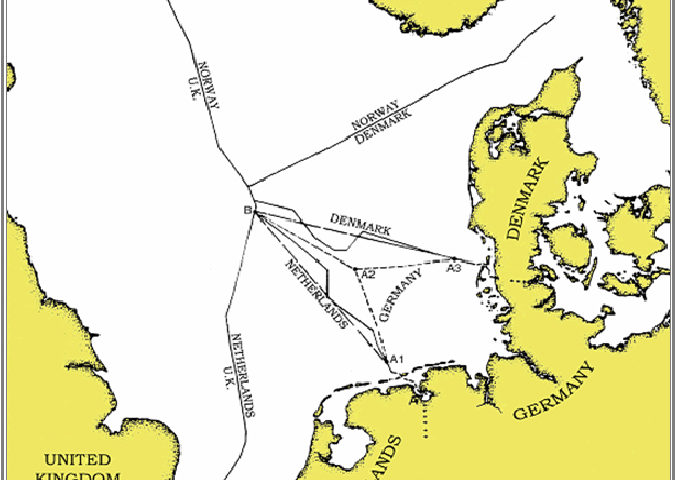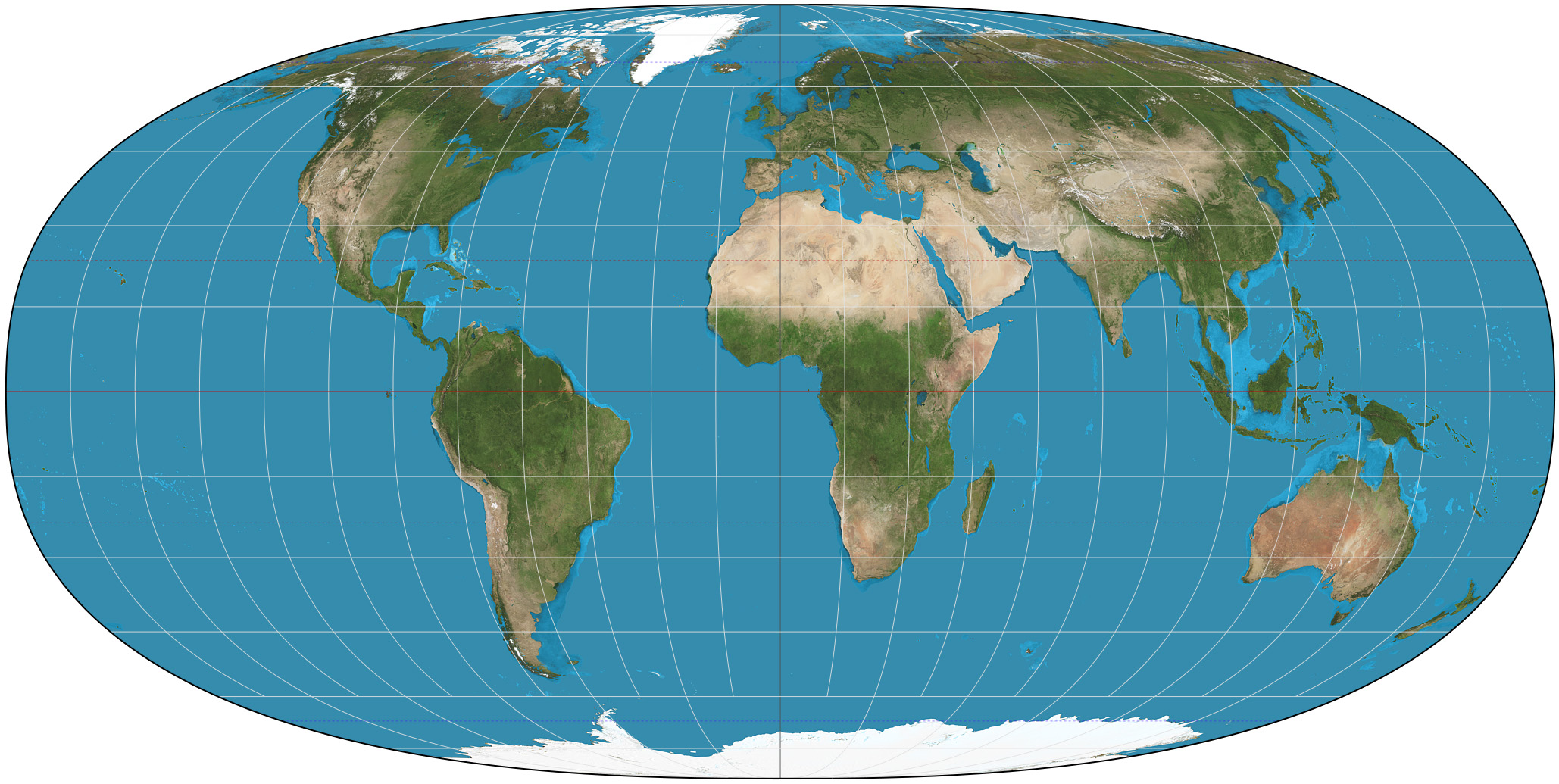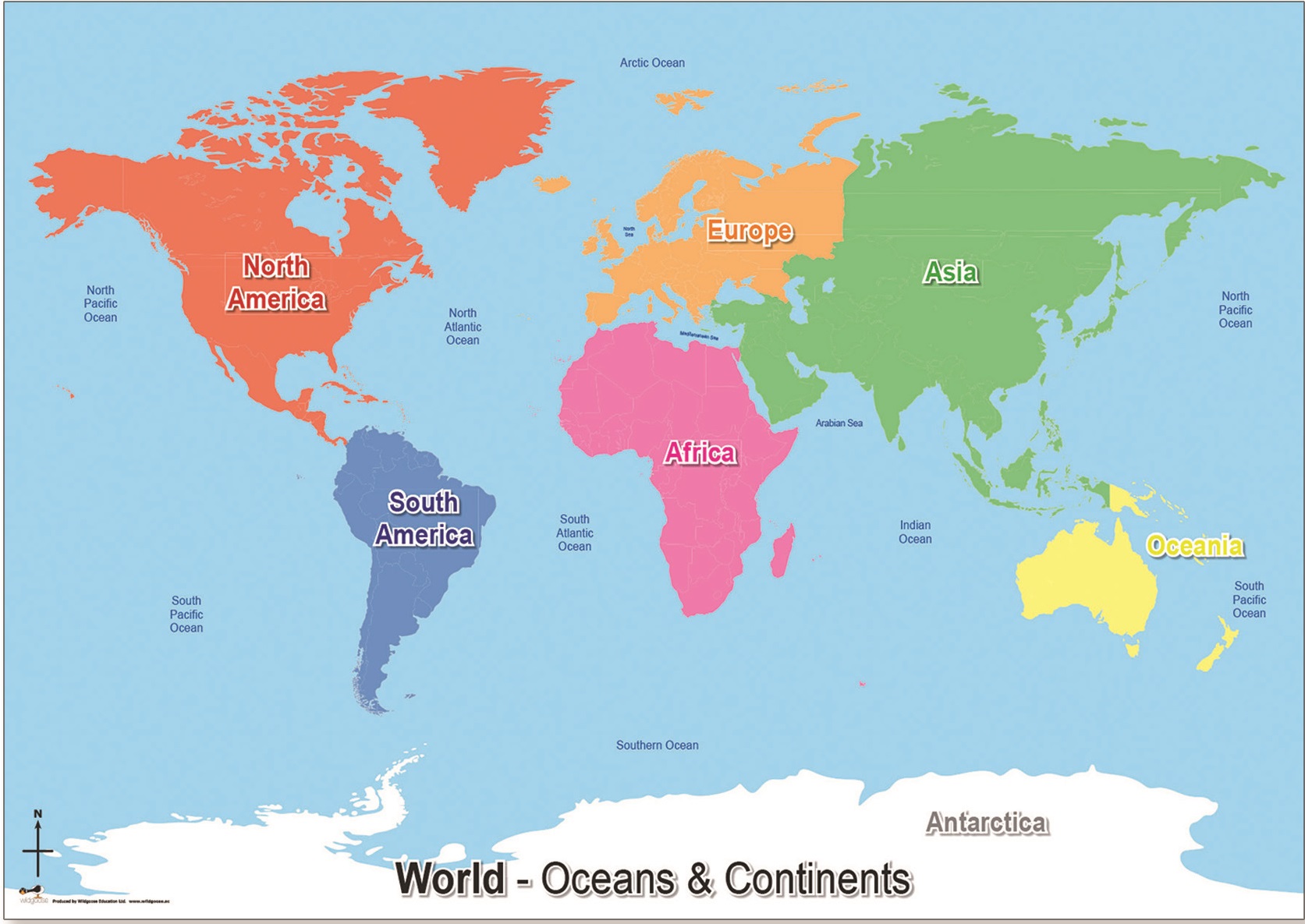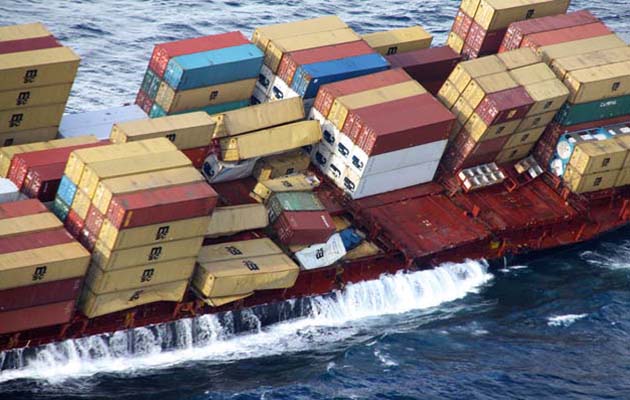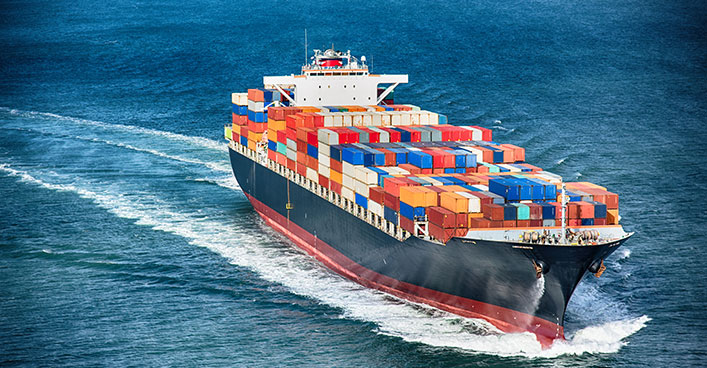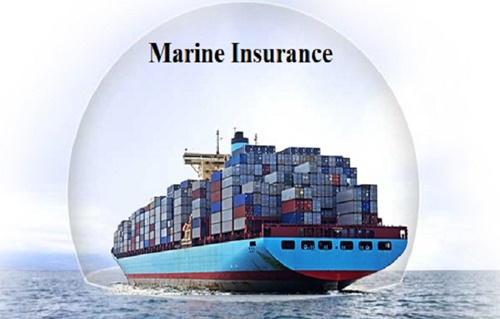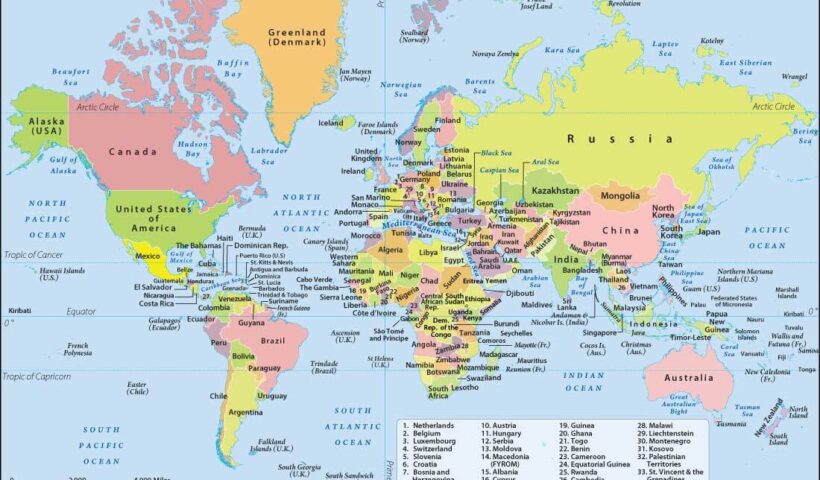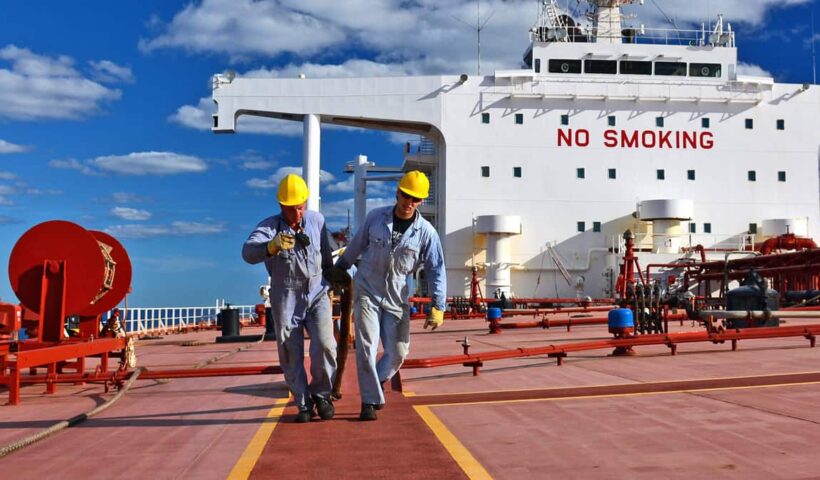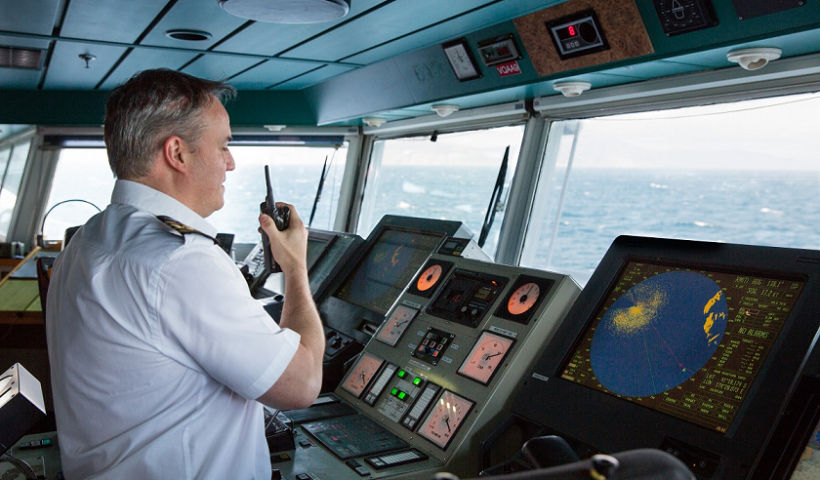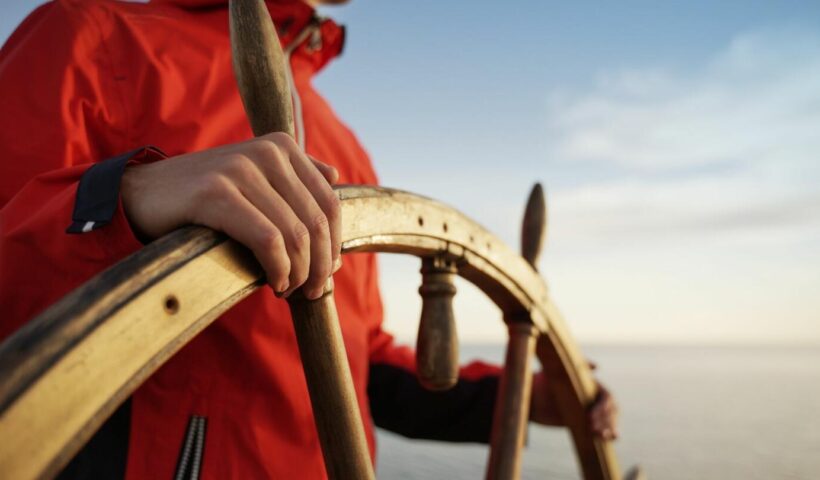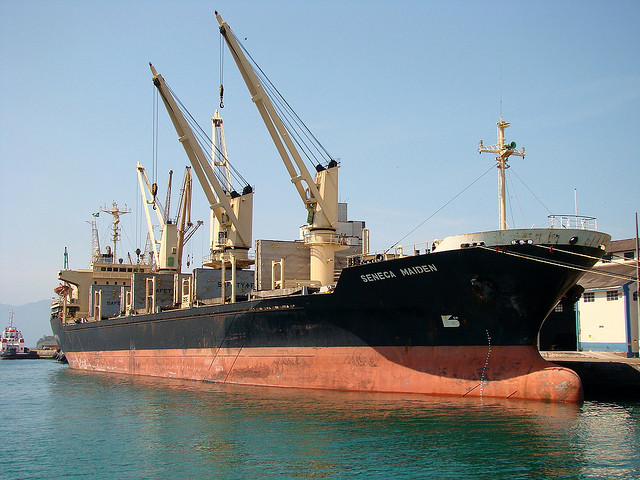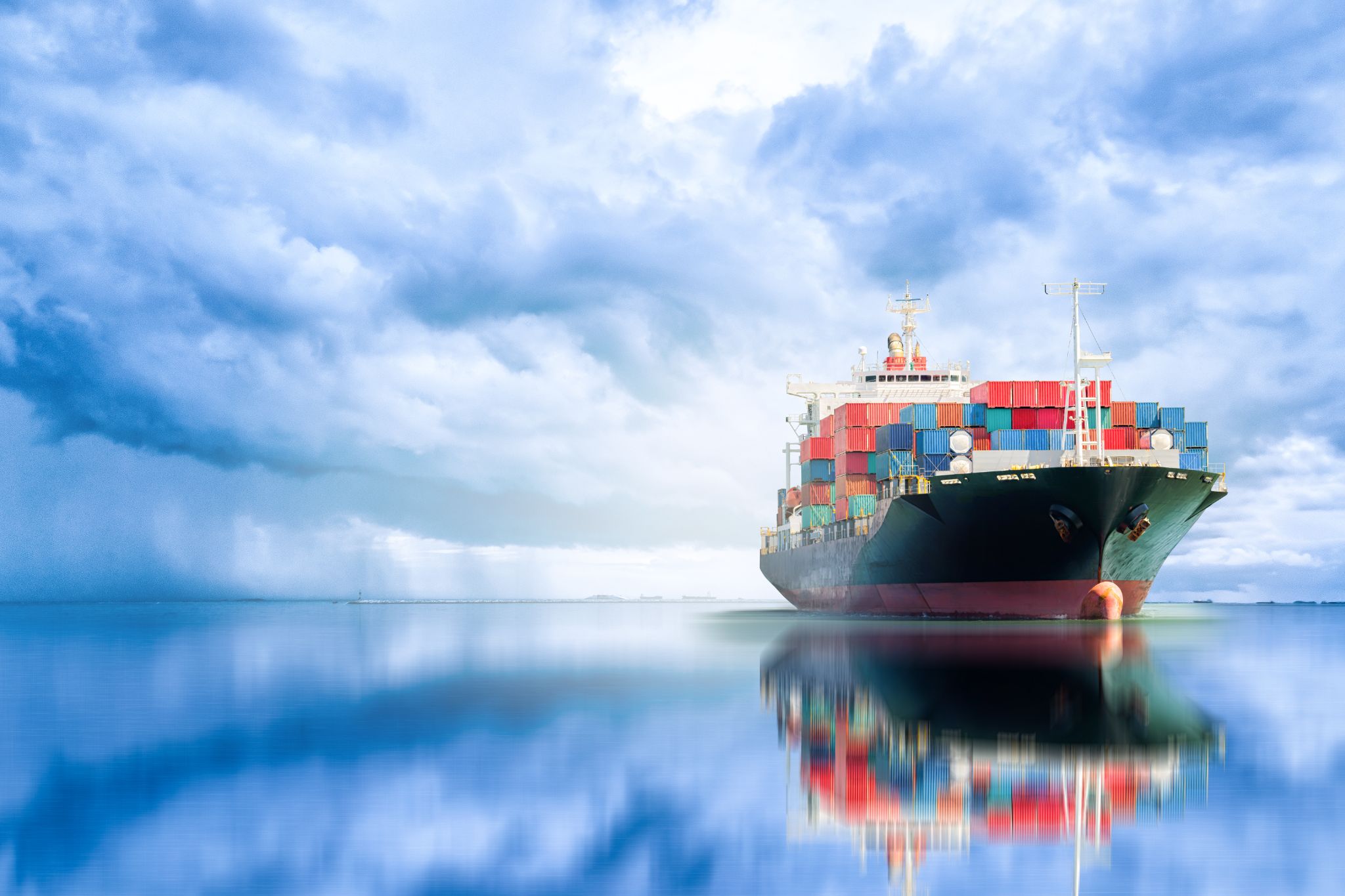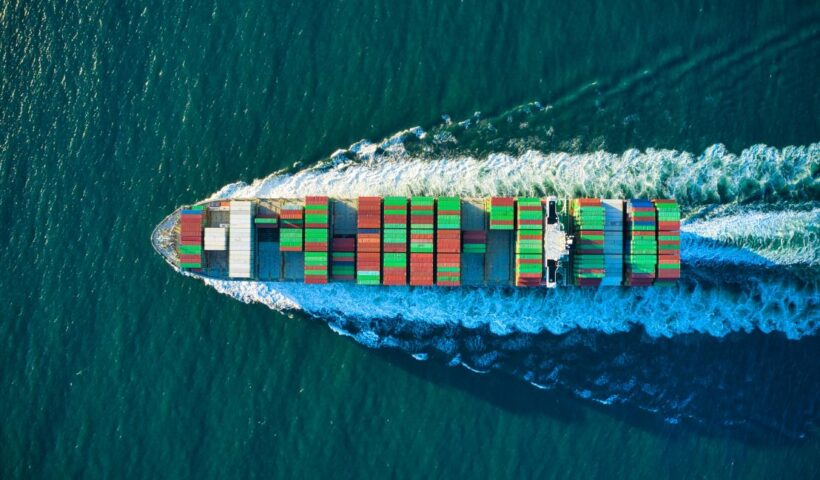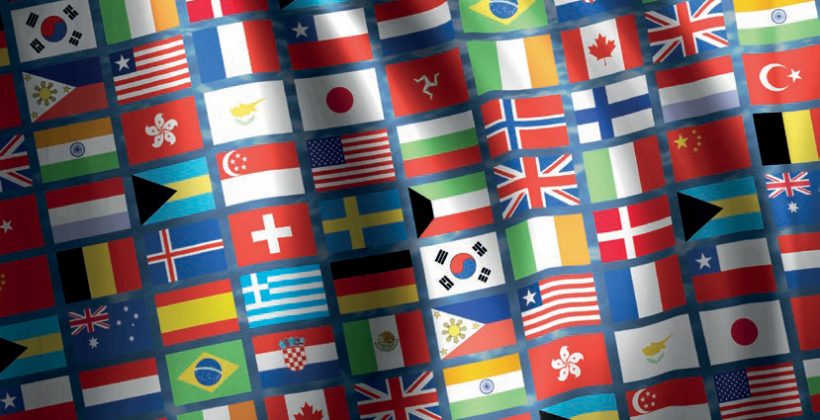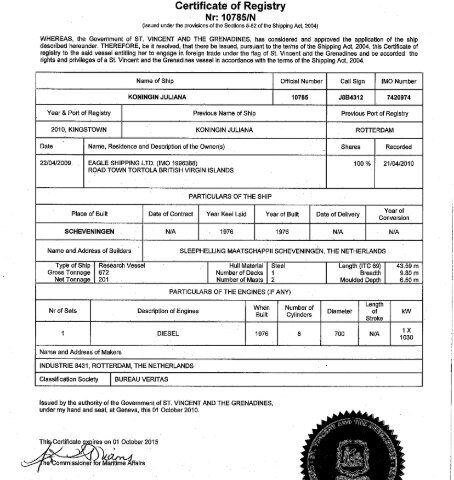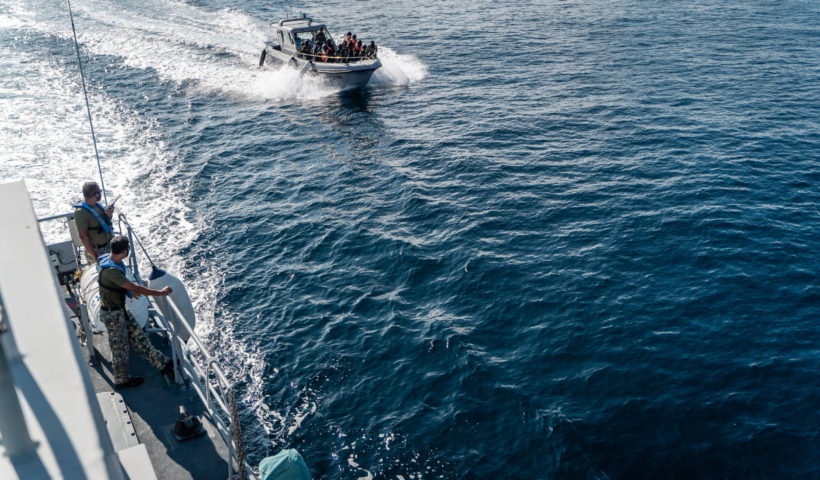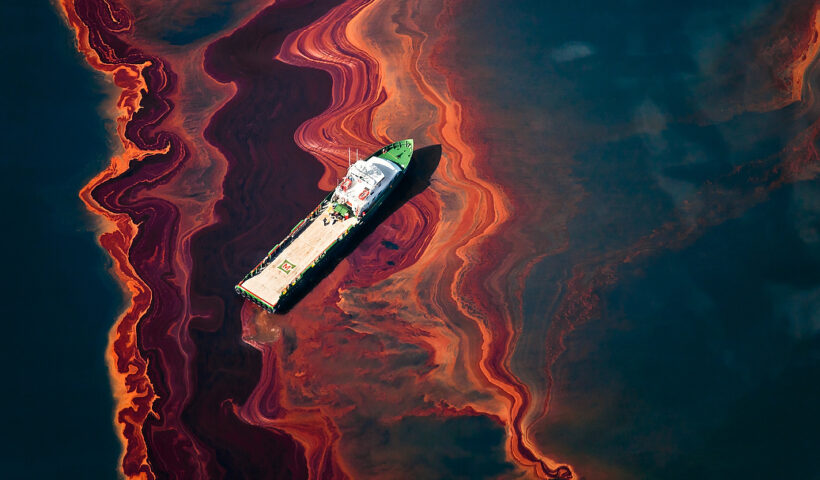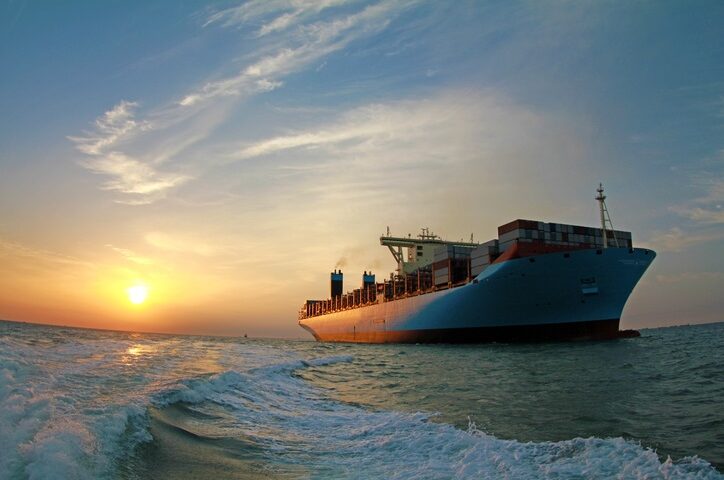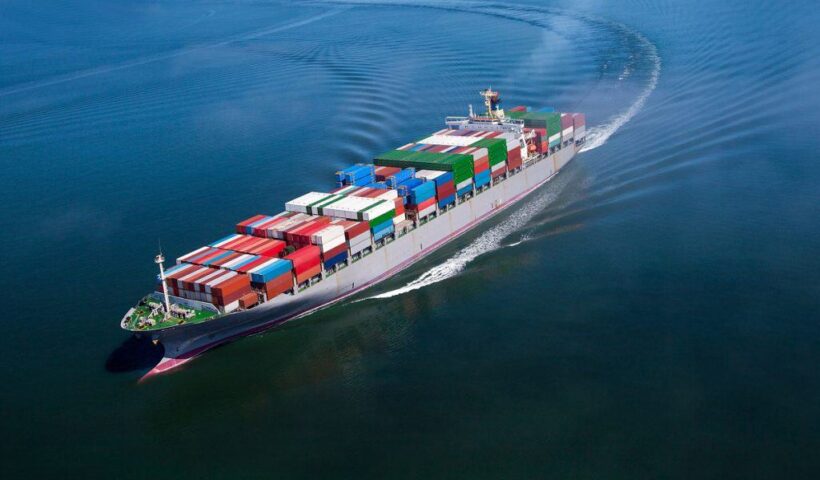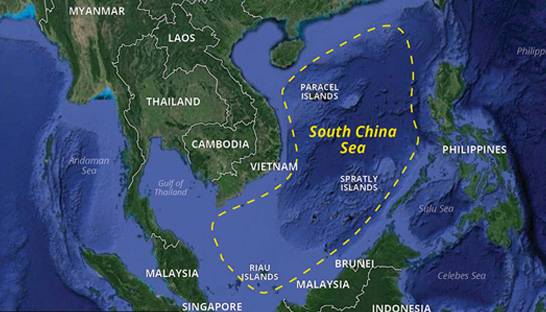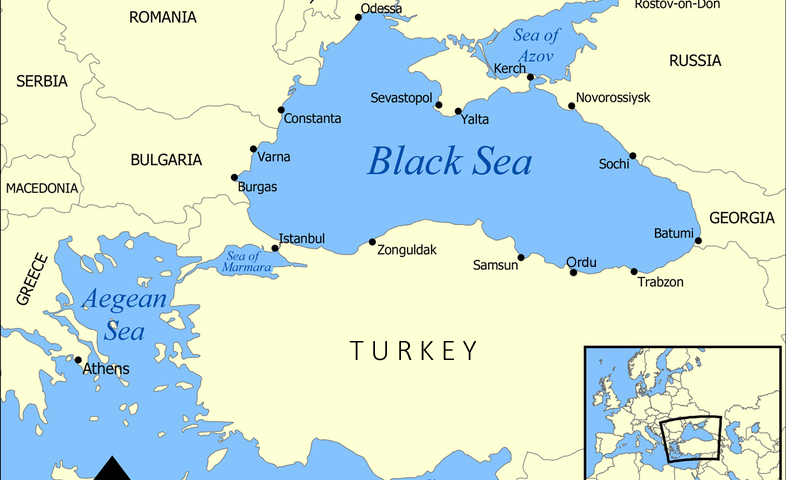Imagine the following scenario. A passenger liner owned by a company in Great Britain, but registered in Malta, carries passengers from 35 different countries on a cruise. It collides 65 miles off the South Carolina coast with a cargo ship owned by a Norwegian company and registered in Panama. It carries cargo from the Port of New York to Cape Town, South Africa. Legal issues arise as to who was responsible for the accident and who will pay for damages and injuries to passengers, cargo, and the ships involved. Where does this case come to trial, and who makes the decisions on the legal issues involved?
View More Who Owns the Oceans?Month: July 2022
About Coastline
The coastline is the boundary between a body of water, such as an ocean or a sea, and the land to which it is adjacent. Coastlines are not constant features but are continuously changing as the result of geological, weather, and other forces. Perhaps the most common factor affecting a coastline is tides. Tides are periodic rises and falls of sea level caused by the gravitational attraction of the Moon and Sun. As Earth rotates on its axis and travels around the Sun, it takes different positions with respect to these two bodies. Sometimes the three bodies are lined up with Earth between the Moon and the Sun:
View More About CoastlineWorld Oceans
Scientists now recognize five bodies of water as oceans today: Pacific, Atlantic, Indian, Arctic, and Southern (also called the Antarctic). Depending on the authority, seven oceans may be identified, with the Pacific divided into the North and South Pacific and the Atlantic into the North and South Atlantic. Table 1.1 summarizes some major properties of the five oceans.
View More World OceansWhere did Earth’s oceans come from?
Where did Earth’s oceans come from? That question has intrigued researchers for centuries. Unraveling the origin and evolution of the oceans is a greater challenge than it is for landforms. In the latter case, solid materials (rocks) that formed billions of years ago are still in place and can be studied to determine their age and evolution. Water that makes up the oceans presents a different problem. That water existed at one point in Earth’s history almost entirely in the form of water vapor in the atmosphere, and at other times, it existed at least partially in the form of snow and ice. Determining the precise amount of water present at any one time in Earth’s history, and its location and boundaries, is, therefore, a challenging task.
View More Where did Earth’s oceans come from?The 1982 and 1985 Tunisia v. Libya Continental Shelf cases
The geography of the area of delimitation in this case is characterized
by a large triangular indentation of the North African coast between Ras
Kaboudia, Tunisia and Ras Tajoura, Libya. The area of the common land
boundary is fairly even and straight in the direction of the coastline.
Further north-west, though, the island of Jerba (Jazirat Jarbah), the
significant concavity of the Gulf of Gabes (Kalij Qabis), the almost
rectangular change of direction of the coast within the Gulf, and finally
the archipelago of the Kerkennah Islands (Juzur Qarquanna) are
prominent features of the area. These constitute the complicating
geographical elements that led to this dispute.
The 1981 Arbitration concerning the Border between the Emirates of Dubai and Sharjah
The Court of Arbitration was requested to delimitate both the land
border and the maritime boundary of the homogeneous continental shelf
of the two federate states. The case involved the analysis of complex
historical facts and conduct of the parties. With respect to the land
boundary in particular, delimitation was necessary to allocate the
formerly nomadic, borderless territory for the purpose of oil extraction.
While the land boundary is not of interest in the present context, the
arguments and decisions with regard to the maritime boundary are an
important contribution to the emerging case law on our subject.
The 1977/78 Anglo-French Channel arbitration
The delimitation of the continental shelf in the English Channel and its
western approaches in the Atlantic area posed problems during negotiations
preceding this landmark arbitration for two reasons. Firstly, the
English Channel Islands, under British sovereignty for purposes of foreign
relations, consist of an archipelagic formation of four main groups
with the principle islands of Alderney, Guernsey, Jersey, Sark, Herm and
Jethon. The islands are situated off the coast of France, the closest, the
island of Ecrehos, being only 6.6 miles from the continent. Geologically,
the islands are both linked to the English mainland by a basic continuity
of the shelf, and also separated from it by a the trough of Hurd Deep, a
trench of some 100 metres running a few miles north of the islands in
south-westerly direction for some 80 miles. Secondly, in the western part
(or the western approaches or Atlantic area), both states show atypical
coastal configurations in the sense that they are neither in a clearly
opposite nor in a clearly adjacent constellation. Moreover, both parties
have islands: the Scilly Isles off the Cornish coast and the island of Ushant
(Quessant) off the Brest peninsula. As possible base points, both groups
of islands could strongly influence the direction of the western boundary
extending into the Atlantic Ocean.
The 1969 North Sea Continental Shelf cases
The facts of these founding landmark cases are well known: the coastal
line along Denmark, the Federal Republic of Germany and the
Netherlands is concave with an almost rectangular angle of the German
coast situated between the other countries. It was this particularity that
caused the difficulties in the delimitation of the common and largely
homogeneous continental shelf of the North Sea.
Approaches to delimitation of maritime boundaries
The establishment of continental shelf zones and exclusive economic zones
(EEZs) considerably increased the number and length of the maritime
boundaries between coastal states. A 1983 survey identified some 376
international maritime boundaries between 137 coastal states around the
globe. In 1988, the US Department of State gave a figure of 412 demarcations
required. Eventually, additional boundaries arose due to the advent
of new states and the breaking-up of the Soviet Union. Yet another
generation of boundaries will result from climate change and accessibility
to resources in the Arctic waters.
ABOUT THE LANDMASSES IN THE WORLD
Only about 29 percent of Earth’s surface consists of land; the remaining 71 percent is water or ice. Thus, less than one-third of our planet is habitable by human beings, and much of this area is too dry, too cold, or too rugged to allow large concentrations of settlement. Our livable world-where permanent settlement is possible-is small indeed. Each of the six continental landmasses possesses unique physical properties, some of which are listed
View More ABOUT THE LANDMASSES IN THE WORLDContinents and Oceans
There is an old saying that “the Earth has six continents and seven seas.” In fact, that generalization is not too far off the mark. Earth has six continental landmasses:
Africa, South America, North America, Eurasia (Europe and Asia occupy a single large landmass), Australia,
and Antarctica. As for the seven seas, there are five great oceanic bodies of water and several smaller seas.
About LAW OF SALVAGE
Geoffrey Brice QC in his book Maritime Law of Salvage, defines salvage as follows:
‘In English law the right to salvage arises when a person, acting as a volunteer,
preserves or contributes to preserving at sea any vessel, cargo, freight or other recognised
subject of salvage in danger.’
The definition incorporates the four essential ingredients of salvage:
• to be a volunteer;
• to preserve or contribute to preserving;
• a recognized subject of salvage;
• which is in danger.
LAW OF WRECKS
n the UK Merchant Shipping Act 1894 ‘wreck’ is defined as including ‘. . . jetsam,
flotsam, lagan, and derelict in or on the shores of the sea or any tidal waters’. ‘Jetsam’
is goods thrown into the sea to lighten the vessel. ‘Flotsam’ is goods which float
when a ship sinks. ‘Lagan’ refers to goods from a sunken ship heavier than water
which has been buoyed to prevent it from sinking. ‘Derelict’ includes the ship itself
if it is not in the possession or control of its owner.
LAW OF GENERAL AVERAGE
If the common adventure consisting of the ship and the cargo is exposed to a peril at sea, the losses and expenses which are intentionally incurred to save the common adventure from the peril shall be shared by the saved interests in proportion to their values.
View More LAW OF GENERAL AVERAGEABOUT ENFORCEMENT OF MARITIME CLAIMS
In order to describe the scope of this Chapter it is necessary to clarify what is
meant by ‘enforcement of maritime claims’. In civil law, the term ‘enforcement’
is normally used in connection with judgments and the enforcement of a judgment
on a ship is possible whatever the nature, maritime or not, of the claim to
which the judgment refers.
LIMITATION OF LIABILITY FOR MARITIME CLAIMS
Limitation of liability for maritime claims is a legal concept which allows the
shipowner to limit his financial exposure for maritime claims up to a maximum
sum regardless of the actual amount of the claims being brought against him. The
concept has a long history and, although there is controversy as to the specific
time when it first appeared, it seems that the first real recognition of a shipowner’s
right of limitation of liability is found in the Tavole Amalfitane, wherefrom it
later spread to continental Europe.
THE LAW OF MARINE INSURANCE
The term marine insurance (Fr. assurance maritime, It. assicurazioni maritime,
Germ. Seeversicherung) refers to the insurance of vessels; cargoes; shipowner’s,
shiprepairer’s, and other marine liabilities; and of the various other moveable property
and associated interests exposed to the risks incidental to marine transport.
It protects the insured against damage, loss, and liability arising from exposure of
a vessel, goods, or any moveable property to maritime perils; meaning the perils
consequent on, or incidental to, navigation at sea. A contract of marine insurance
may cover mixed sea and land, or inland water, risks.
world maps via oceans and seas(google map and high resolution pdf map)
Google map Bing-Microsoft map Post Views: 40,383
View More world maps via oceans and seas(google map and high resolution pdf map)Contracts in maritime labour law
The general maritime law, courts, and national legislatures have given special
attention to seafarers’ employment contracts. An employment contract is the
most important document relating to a seafarer’s life and work. Seafarers’ employment
contracts are also called articles. The general maritime law has for centuries
required all seafarers’ employment contracts to be in writing. As early as 1729,
English statutes have required seafarers’ employment contracts to be in writing.
Recruitment and Placement in maritime labour law
The need to recruit reliable and skilled persons for seagoing careers is as old as the
shipping industry itself, and it remains a critical issue for ship operators. Today,
both ship operators and seafarers rely on placement agencies (also called manning
agencies) to connect seafarers with jobs on ships. Ship operators rely on placement
agencies to identify qualified seafarers for their ships’ crews, and seafarers rely on
the agencies to find jobs on ships. Some countries require their citizen seafarers to
use only placement agencies licensed in their country.
Status of Master and Seafarers in maritime labour law
Maritime law has provided seafarers special rights, protections, and obligations,
many of which were not applicable to other workers. The definition of a seafarer
is a term of art that was, and remains, very important in determining to
whom maritime law could be applied. Although who is a seafarer may appear obvious,
maritime nations have crafted various definitions for seafarers, depending
on the context of the laws applying to them. The UK Merchant Shipping Act
(MSA) 1995, for example, defines ‘seaman’ as every person, except masters and
pilots, employed or engaged in any capacity on board any ship. Because of their
authority and relationship with shipowners, shipmasters are not always considered
seafarers, although protective labour laws generally include them.
About Seafarers’ Rights
Seafarers are among the most regulated of all workers. Almost every aspect of lives
aboard ship is regulated: their hiring, their dismissal, their working conditions,
their sleep, their food, their health, their sickness, their recreation, and even their
deaths. Seafarers face particular perils, endure substantial physical hardships, put
up with strict discipline, and suffer lonesome separations from home. They have
special lives and work, and they need special laws to protect them.
Bareboat Charter Registration in shipping and maritime law
An important development in recent years has been the increasingly widespread
practice whereby a vessel registered in one State is permitted to fly the flag of
a second State for a fixed period. This situation generally arises as a result of a
bareboat charter whereby a vessel registered in State A is chartered to nationals
of State B who, during the charter period, operate the vessel under the flag of the
latter State.
International Registries in shipping and maritime law
In recent years, the traditional maritime countries have fought back in an endeavour
to repatriate tonnage lost to the open registries. The response of a number of the
traditional maritime nations has been, often in addition to tax and other financial
incentives made available to the shipping sector, to permit the temporary registration
of their vessels under the flags of foreign registries through bareboat charter
arrangements or to establish offshore or international registries, offering many of
the advantages to operators of the open registries, but nonetheless retaining a link
between beneficial ownership or management and the national flag.
Open Registries in shipping and maritime law
World shipping, up to the early post-war years, was dominated by the fleets of the
traditional maritime nations—among these we may mention the United Kingdom
with its imperial trade routes, the United States, France, the Netherlands, and the
Scandinavian countries. From the 1950s onwards, a gradual but ever accelerating
contraction took place in the fleets of these nations. To some extent, this contraction
can be attributed to a diversion of resources from the maritime sector, the
consequent slackening of investment, and catastrophic slumps such as took place
in the mid 1980s. However, the most significant reason for the haemorrhage of
tonnage from national flags has been the use by ship operators of the open registries,
often known as ‘flags of convenience’.
Freedom of States to Fix Conditions for Registration
Article 91 of UNCLOS provides: ‘1. Every State shall fix the conditions for the
grant of its nationality to ships, for the registration of ships in its territory, and for
the right to fly its flag.’
Registration of ships in shipping, maritime law and law of the sea
Registration means the entering of a matter in the public records. Registration
is generally—but not always—not only a precondition for, but also the test of, a
vessel’s nationality. This is the public law function of registration, as opposed to its
private law function.
what is the meaning Documentation in shipping and maritime law?
By ‘documentation’ we mean the issuance to a vessel by the competent authorities
of a State of a document evidencing the vessel’s nationality and attesting to her
right to fly the national flag of that State. Although registration and documentation
generally go hand in hand, this is not always the case and the two concepts
should not be confused: for registration generally involves the recognition and
protection of the shipowner’s title to the vessel and the rights of mortgagees as
well as the conferment of nationality; documentation, on the other hand, is chiefly
concerned with granting entitlement to fly the national flag.
About Nationality of ships
A vessel may be considered as possessing the nationality of a State even though she
is unregistered, possesses no documents evidencing that nationality, nor even flies
the flag of that State. Historically, a vessel’s nationality was determined by reference
to so-called connecting factors: as we have seen, the Navigation Acts required
every British ship to be of British build; the French Acte de Navigation of 1793 contained
similar provisions in respect of French ships. In much the same way as the
Jones Act in the United States, the purpose of these laws was protectionist. The UK
Merchant Shipping Act 1894, prior to its amendment by the Merchant Shipping
Act 1988, defined a British ship purely in terms of ownership, regardless of whether
or not she had been registered as the Act required.
Model National Law on Acts of Piracy and Maritime Violence, 2001 as a International Shipping Documents
It is up to the States to introduce the proposed draft model on maritime piracy in
their respective national legislation. The recommendation is consistent with other
international conventions and instruments already approved, such as the United
Nations Convention on the Law of the Sea, 1982 and the 2001 International
Maritime Organization (IMO) Code of Practice for the Investigation of the
Crime of Piracy against Ships.
Guidelines on Oil Pollution Damage, 1994 as a International Shipping Documents
In spite of the fact that the International Convention on Civil Liability for Oil
Pollution Damage, 1969 (CLC) and the International Convention for the
Establishment of a Fund for Compensation for Oil Pollution Damage, 1971,
together with the amendments, constitute a uniform regime of claims for oil pollution
damage, the practical application of these instruments has created some
problems of interpretation, particularly in defining economic loss and the calculation
of the preventive measures, clean-up, and restoration of the damage suffered.
The CMI thus approved the said guidelines in Sidney, on 8 October 1994, which
are concerned with the admissibility and assessment of claims for oil pollution
damage.
Voyage Charterparty Laytime Interpretation Rules, 1993 as a International Shipping Documents
The so-called ‘Voylayrules 93’ document was prepared by a joint committee of the Baltic and International Maritime Council (BIMCO), CMI, the Federation of National Associations of Ship Brokers and Agents (FONASBA), and the International Association of Dry Cargo Shipowners (Intercargo) to offer to the contractual parties the meaning of twenty-eight sets of initials and most commonly used words in voyage charterparties, such as port, berth, laytime, day, holiday, to average laytime, notice of readiness, demurrage, dispatch money, strike, and so on.
View More Voyage Charterparty Laytime Interpretation Rules, 1993 as a International Shipping DocumentsUniform Rules for Sea Waybills, 1990 as a International Shipping Documents
The CMI also approved in the Paris Conference, on 29 June 1990, eight rules to interpret the meaning of the sea waybill. Possibly these rules only shall apply voluntarily and when adopted by a contract of carriage which is not covered by a bill of lading or similar document of title, whether or not the contract is in writing.
View More Uniform Rules for Sea Waybills, 1990 as a International Shipping DocumentsUniform Rules for Electronic Bills of Lading (EBL), 1990 as a International Shipping Documents
On 29 June 1990 in Paris, the CMI approved this useful document to meet the
need of uniform interpretation in the use of EBL in carriage of goods by sea. Like
any other private document, the rules shall apply whenever the parties so agree.
Incoterms, 2010 as a International Shipping Documents (pdf)
Incoterms means ‘International Commercial Terms’. It is the official document
approved by the International Chamber of Commerce containing rules for the
interpretation of international trade terms. Reference to Incoterms 2010 in a contract,
even without incorporating the full wording text, bind the parties to their
respective obligations as defined in the specific term (i.e. CIF (cost, insurance, and
freight), FOB (Free on board), EXW (Ex works), etc.).26 The first set of international
rules for the interpretation of trade terms was published in 1936, Incoterms 1936 Amendments
and additions were later made in 1953, 1967, 1976, 1980,
1990, 2000, and 2010.
York-Antwerp Rules, 2004 as a International Shipping Documents (pdf)
The York-Antwerp Rules are by far the most widely accepted international document
in the shipping industry. Its first version adopted goes back to the 1954
Comité Maritime International (CMI) International Conference, and new amendments
were made in Hamburg 1974, Sidney 1994, and Vancouver 2004.
Sources of Shipping Law
Sources of law are the authorities from which the law is made: the constitution of a
State, its statutes, government regulations, and the well-recognized maritime uses and customs.
Although international maritime conventions are an essential tool to achieve uniformity,
there are other instruments that, even though they are private documents,
the maritime community accepts as uniform rules of conduct in solving shipping
problems. The difference between the convention and the document is that the
convention is a treaty signed by States and therefore carries with it international
obligations. The shipping document is a private instrument and is therefore binding
only if agreed by the contractual parties (pacta sunt servanda).
Concept of Shipping Law and Degrees of Autonomy
The concept underlying any area of law, and shipping law is no exception, should
entail two core issues: the criterion defining the subject matter and the nature of
its rules. Both factors are inextricably linked. First, by defining the subject matter,
a part of the social reality is identified and, consequently, it is governed by specific
rules of law. Second, the set of rules so defined leads to the issue of its eventual
justification, because this set of rules deserves a special or different legal status. In
other words, a new branch of law means that there is a new set of rules that applies
to a sector of the social reality.
About the South China Sea
With the ports of Singapore at one end and Hong Kong-Macau at the other, the South China Sea is one of the most heavily shipped seas in the world. The South China Sea is one of the most important economic and environmental regions in the world. More than half of the world’s fishing vessels are in the South China Sea, and millions of people depend on these waters for their food and livelihoods.
View More About the South China SeaAbout the Black Sea
The Black Sea was once a rich fishing ground, an
abundant source of fish for everyone from the Ancient
Greeks to the modern Soviet Union. Sturgeon and their
eggs were so plentiful in the estuaries of Black Sea rivers
that they were once the food of the poor.

